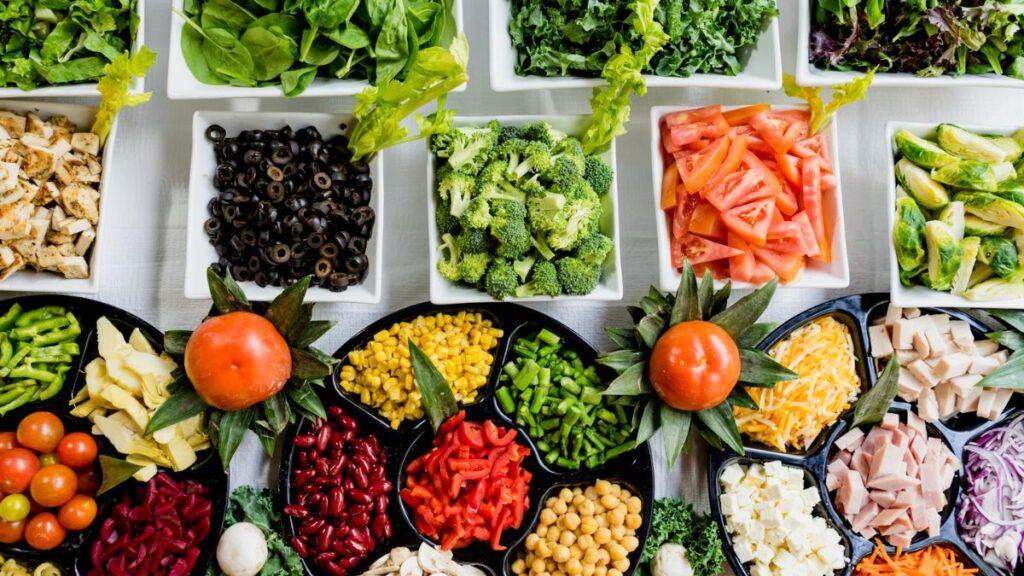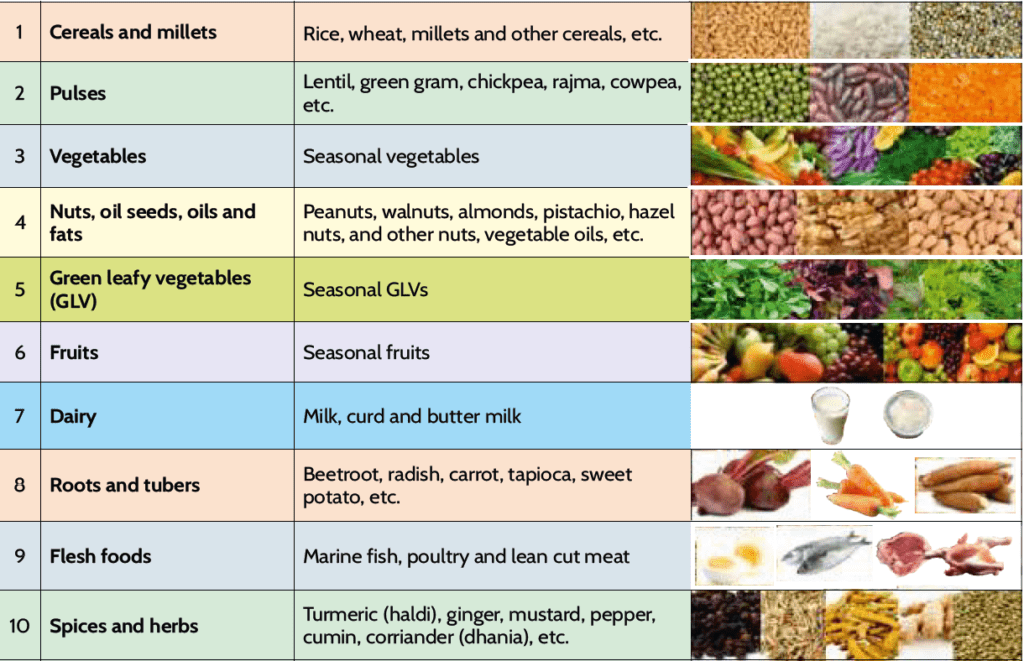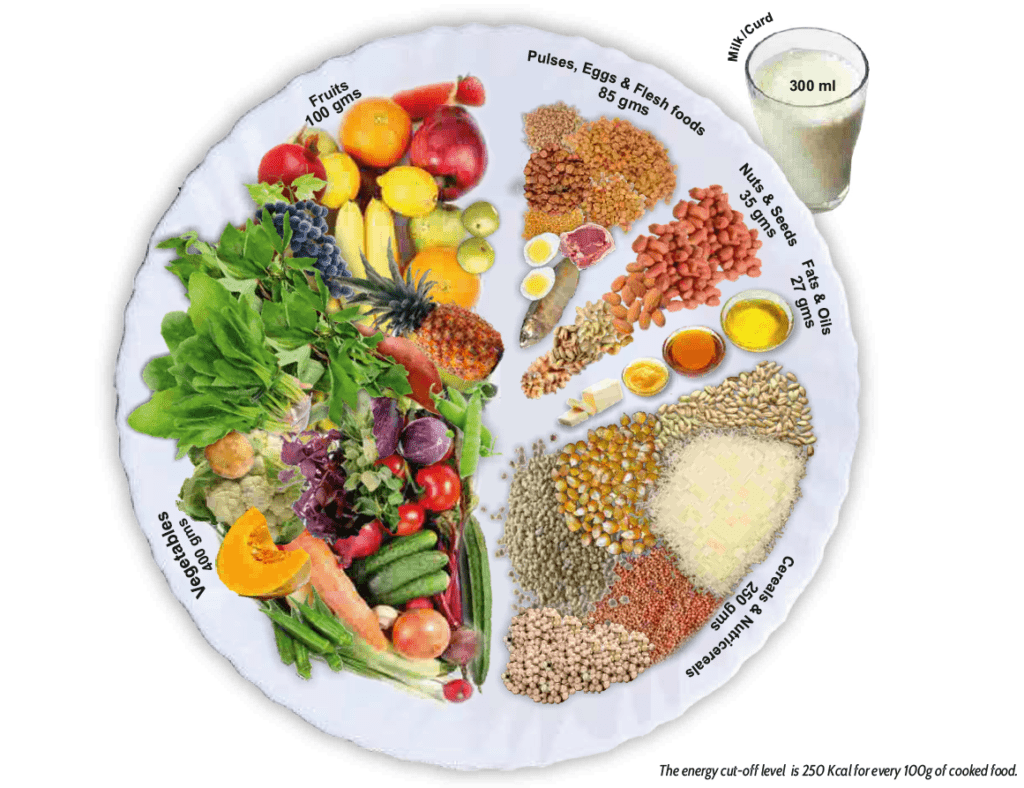Food Pyramid Decoded: How to create a healthy and balanced diet

Representative Image
According to NIN-ICMR, a healthy and nutritionally balanced diet includes a variety of foods and has sufficient quantities of calories, proteins, vitamins, minerals, and fiber.
A well-balanced diet is one that is both healthy and nutritious. It contains a diverse range of nutrients that serve a variety of functions in the body.
Guidelines for a Balanced Diet
National Institute of Nutrition-Indian Council of Medical Research has published very clear guidelines for a balanced diet for Indians. Here are those guidelines.
1. Include Variety Within Food Groups – Cereals, pulses, fruits and vegetables are different food groups. Within each food group, include adequate variety to ensure a balanced nutrition profile. For example, within cereals, do not depend upon only one type of cereals, rather include a variety of cereals in your diet.
2. Add Variety of Oilseeds and Nuts – Oilseeds and nuts and highly nutrient dense and provide good quality fats, proteins and other nutrients. Foods such as fenugreek seeds, amaranth seeds, flax seeds, chia seeds and basil seeds have health promoting effects and can be consumed at least three to four times a week.
3. Include a variety of fruits and vegetables in daily diet – Vegetables and fruits are sources of protective nutrients such as vitamins, minerals, phytonutrients, antioxidants and fiber. Different varieties of vegetables and fruits should be consumed.
4. Limit Added Fat, Salt and Sugar Intake – Limit intake of foods with added fat, oil or salt. Avoid foods and beverages with added sugar.
What are Food Groups
Foods have been categorized into 10 groups to help people make choices from different food groups. Adequate quantities of foods from at least 5-7 food groups should be consumed on a daily basis, (refer image below). Other foods may be consumed at least two to three times a week. This method of ensuring diversity and variety within groups will meet adequacy of most nutrients such as essential amino acids (protein), essential fatty acids, vitamins, minerals, phytonutrients, fiber and bioactive substances. Spices like turmeric, cumin, ginger, garlic, cinnamon, pepper and cloves are rich in antioxidants and could be part of a balanced diet.

My Plate for the Day
The ‘My Plate for the Day’ (image below) developed by the ICMR-National Institute of Nutrition provides a simple guidance to achieve a balanced diet, sourcing energy from different food groups. The plate typically illustrates proportion of foods from different food groups to be sourced for a 2000 Kcal Indian diet. The proportion of each of the food groups serve an important function. The plate recommends sourcing of macronutrients and micronutrients from a minimum of 10 food groups with vegetables, fruits, green leafy vegetables, tubers and roots forming essentially half the plate of the recommended foods per day. At least half of the recommended cereals should be whole grains such as millets, which are rich sources of micronutrients such as vitamins and minerals, and also provide antioxidants, phytonutrients, fibre and bioactive compounds and induce favourable changes in the gut microbiota (microbes). Millets can be consumed to the extent of 30%-40% of total recommended cereals in raw weight.

Food Pyramid for a Balanced Diet
The study and the nutrition guidelines reveal that the daily diet should be designed in such a way that it consists of food items in the following proportion.
- Vegetables (400g) and Fruits (100g)
- Cereals and Nutricereals (250g)
- Milk/Curd (300ml), Pulses and legumes (85g)
- Nuts and Seeds (35g), Fats and Oils (27g)
In simpler terms, the daily allowance of 2000 Kcal should come from a variety of food groups as listed above. The graphic representation of the food pyramid for a balanced diet is shown in the image below.

The dietary guidelines and nutrition requirements vary with age, gender and overall condition of the body. It is also important to ensure adequate physical activity for appropriate utilization of nutrients from a balanced diet.
Check with your nutrition consultant for a diet chart, specific to the requirements of your age, gender, physical condition and availability of food items in your area.
Citation
‘Dietary Guidelines for Indians – 2024’
National Institute of Nutrition – Indian Council of Medial Research
This article is for general information purpose only and not a medical advice. Punenow News does not claim accuracy of information provided in this article and shall not be liable in any incidental or consequential event arising from the usage of information contained in this article.







